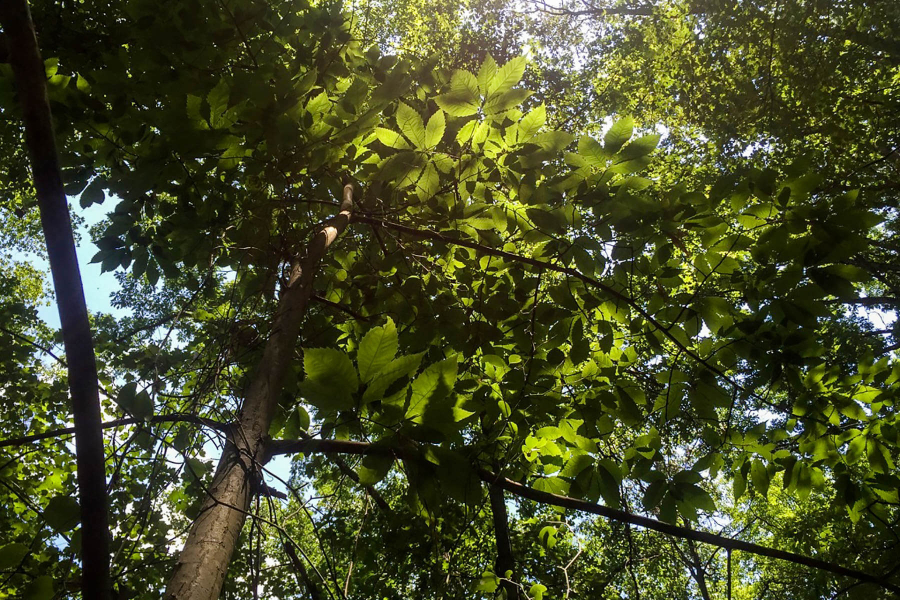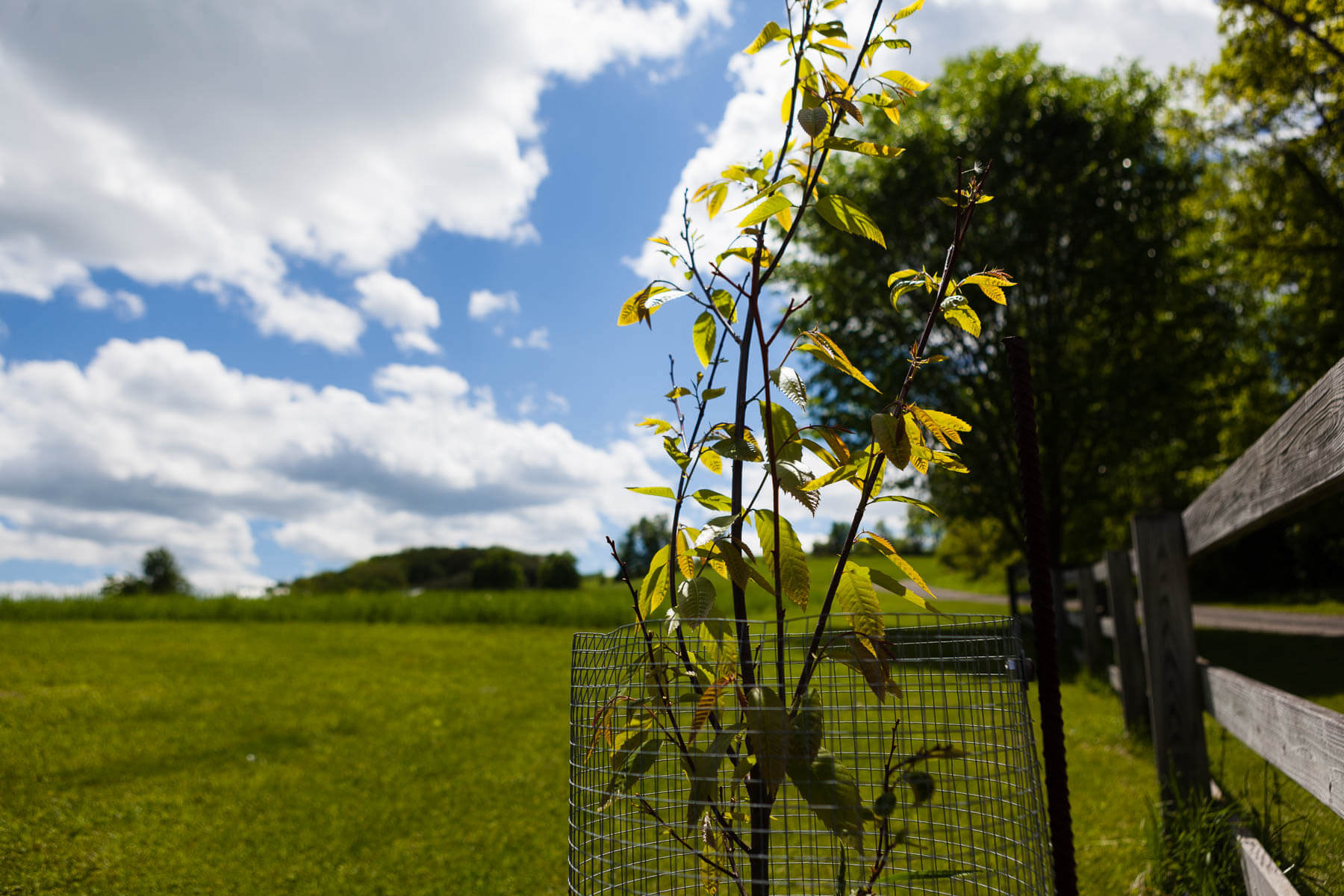To save the American chestnut, scientists turn to genetic engineering

Among the many stories that demonstrate our country’s complicated relationship with nature, the devastation and ongoing revival of the American chestnut stands as tall as any.
For centuries, the American chestnut was one of North America’s most abundant and iconic trees. It spread along much of the East Coast and Southern U.S. and dominated the hills and hollows of the Appalachian Mountains. Its edible chestnut, which fell from the tree in enormous quantities, was eaten by humans and wildlife alike, while the tree added valuable biodiversity to forests.
In its heyday, the American chestnut could rise to 100 feet fall, and while it wasn’t the strongest or most beautiful wood, it grew fast and didn’t rot. Everything from barns to furniture to telephone poles were made of American chestnut. And no matter how fast it was cut down, there was always enough left over.
But by the early 1900s, this had all changed. An increasingly globalized world was introducing North American plants to pathogens they were not yet immune to. In the early 1800’s, an invasive pathogen known as Phytophthora cinnamomi (P.cinnamomi), which is believed to have been first brought over by European settlers in the 1700s, was already infecting American Chestnuts in the South.
At the turn of the century, Cryphonectria parasitica, a fungus carried by trees from Japan, advanced far beyond P. cinnamomi and spread across the entire East Coast, causing fatal “blights” that killed an estimated four billion American chestnuts in just forty years. Farms and businesses relying on the tree went bankrupt, and its estimated that billions of today’s dollars were wiped out in a matter of years. The impact of the Chestnut blight is still considered one of the worst ecological disasters in North America.

Turning to genetic engineering to save the American chestnut
Flash forward to the 21st century, and various regions—including the Chesapeake —still feel the loss. Bringing back the American chestnut would return much-needed biodiversity to our forests, provide nutritious food for wildlife, reestablish a sturdy and fast-growing resource and slow climate change by sequestering carbon.
Many states and environmental organizations are committed to restoring the American chestnut through a variety of methods, including securing land where the plant once thrived or conducting assisted pollination. But the linchpin for bringing back the species is to develop blight-resistant trees.
Attempts to do so go back to the 1970s, when the American Chestnut Foundation’s founder Dr. Charles Burnham proposed a breeding method that would use a related species with natural resistance to the fungus that causes Chestnut blight. Still in use today, Burnham’s approach is a delicate zigzag of crossbreeding. First, an American chestnut is crossed with a blight-resistant Chinese chestnut to yield a hybrid that’s moderately resistant. Next, the hybrid is “back-crossed” with other pure American chestnuts to dilute the unwanted characteristics of Chinese chestnuts.
That generation as well as two more rounds of back-crossing are then tested against the fungus. At that point, with trees that are 15/16th American chestnut, scientists start breeding the hybrids with one another, while retaining the blight-resistant genetics. A similar process is done to produce trees that are resistant to P. cinnamomi, which are then—you guessed it—back-crossed with blight-resistant ones.
These hybrid trees exist in the wild and are a vital part of the American chestnuts’ restoration strategy. However, scientists have also been working on a method that is much faster than a back-crossing approach: genetic engineering. Since 1990, the American Chestnut Foundation has partnered with the State University of New York’s (SUNY) College of Environmental Science and Forestry to produce a blight-resistant American chestnut that could be created in a lab, instead of waiting decades for generations of trees to be grown and pollinated.
In 2014, A SUNY researcher reported that a genetically modified tree named Darling 58 both resisted blight infection and transmitted resistance to its offspring. Subsequent tests showed that the tree perfectly mirrored the original American chestnut, with nuts indistinguishable from those of native trees, while its pollen, flowers and decaying leaves caused no harm to the surrounding ecosystem.
While the project has proved successful, the next hurdle for scientists is to get approval for planting. While the United States Department of Agriculture (USDA) allows farmers to produce genetically modified food, the agency doesn’t currently allow ecologists to introduce modified plants into the wild. For now, the SUNY researchers have put forth a deregulating petition to the USDA to allow their strand of American chestnut to be planted, but opponents are skeptical of humans “modifying” nature to this extent, and caution that the effects on the ecosystem from the introduction of the tree would be irreversible.
Regardless of whether the genetically modified variety of the American chestnut is approved, restoration will continue. Hybrid trees are already in use across the United States and organizations like the American Chestnut Foundation continue to build upon decades of science and research in guiding restoration strategies.
It will be a long time before people give up on the American chestnut, a regional treasure that is just too special to let go.

Comments
There are no comments.
Thank you!
Your comment has been received. Before it can be published, the comment will be reviewed by our team to ensure it adheres with our rules of engagement.
Back to recent stories